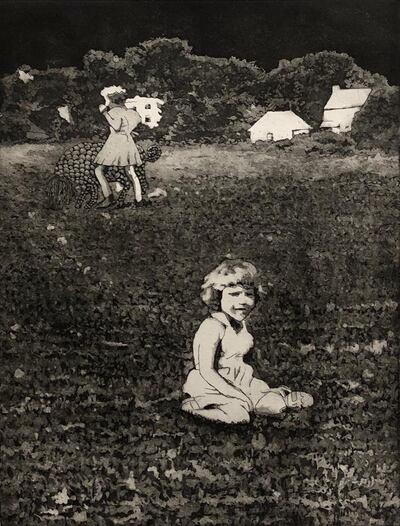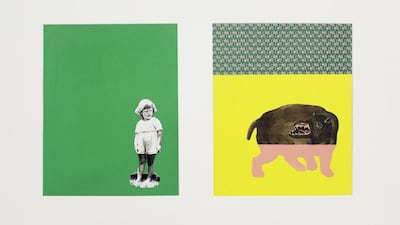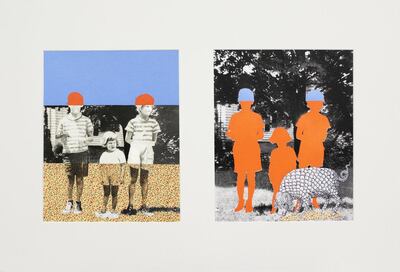"What is your earliest childhood memory?," asks artist Laura Schneider.
As part of her solo exhibition Thymesis, which opened on Tuesday, September 24, at NYU Abu Dhabi Art Gallery’s Project Space, Schneider has installed a phone booth where visitors can share their first memories via audio recordings.
It is a continuation of a project that the artist started five years ago titled Earliest Memory Archive. She first approached family members and friends to share their recollections, then eventually asked strangers to contribute during her travels. Soon, she opened it up to the wider public. By calling a number, people could listen to recordings of strangers' earliest memories and record their own afterwards.
"First memories are interesting because they are profoundly personal – the beginning of our conscious selves – and often unknown to others," she says.
Inside the exhibition's phone booth, visitors can listen to around 50 previous recordings. By expanding this project to the UAE, Schneider aims to diversify the archive. She also hopes that people will develop an affinity with these unknown voices.

"The Earliest Memory Archive seeks to connect us – across decades, experiences, cultures, and languages – by asking a simple question that gets at the heart of the human sentient experience," she says. "We share so much, yet seem to focus on that which divides. We group into insiders and outsiders, us and others, familiar and 'foreign'. I hope the individual voices that share a space with us, as we listen to the recordings, can create a sense of presence out of absence."
The artist, who is also a lecturer of visual arts at NYUAD, drew the title of the exhibition from the medical condition hyperthymesia or highly superior autobiographical memory. Those who have it can remember every detail of their lives, including personal experiences and public events of personal significance.
“I chose to stress thymesia, a Greek word for memory, in contrast to hyperthymesia – rather than remember every day of our lives, we forget most days. We cling to only a fistful moments, organising them into our stories of self,” Schneider explains.
Memory has always been a prominent theme in the American artist’s work, as she looks at how narratives are woven from reconstructions of events, even by those who may not have lived the experience firsthand. This includes stories passed on within families, which are often imbued with nostalgia, erasure and imagination.
Schneider investigates how these false recollections persist through generations, referring to them as “memories once removed”, which she describes as ”individual’s inherited memories, ones that belong to a period from either before they were born, or were too young to remember.”
Thymesis includes 25 works that explore this theme, including an ongoing series that comprises mixed-media collage and drawings. In them, old family photographs are recreated, faces and figures are rearranged and fantastical hybrid animals are added. The resulting montages visualise how memory can be – fragmented and fictional.
With the Earliest Memory Archive, the artist studies autobiographical narratives and often shows people how unreliable memory can be. "I love how doubt plays a role – whenever I ask, people always wonder if it really is their first memory, or a memory at all. Perhaps it is from a picture, or something their parents told them," she says.
Her work pushes people to reconsider their perceived objectivity towards the stories they tell themselves. She explains: “Their subjectivity makes them unique, but it can also make them dangerous if we mistake interpretation for an ultimate truth. Sometimes we explain away ambiguity and complexity for the sake of a graspable answer.”
It’s something to remember, the next time we become too certain of our own side of the story.
‘Thymesis’ is on view at NYUAD Art Gallery’s Project Space will run until Monday, October 7. More information on nyuad-artgallery.org



